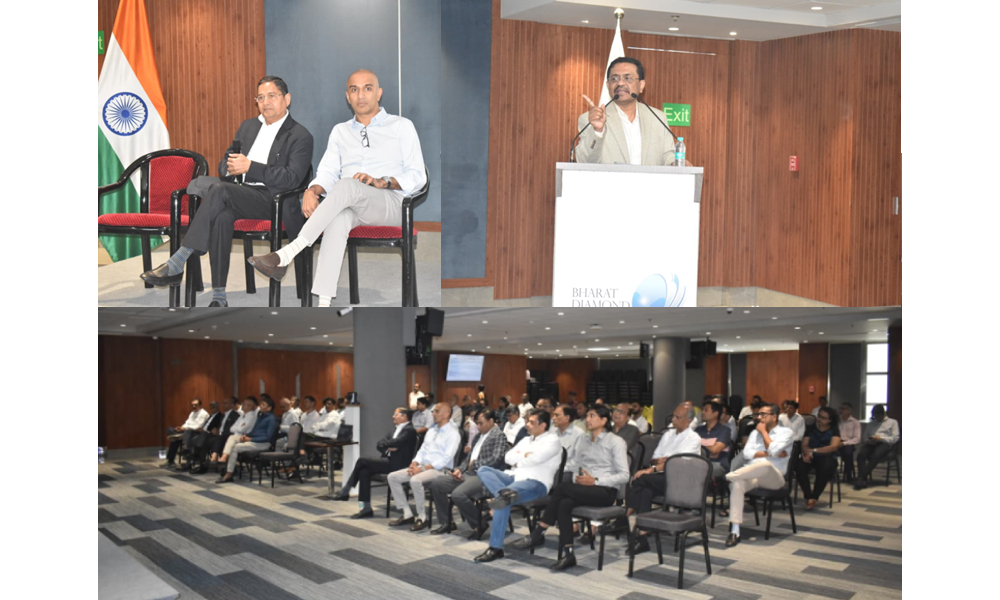GJEPC convened an exclusive trade meet in hybrid mode on 6th October at Bharat Diamond Bourse (BDB) to address the mounting challenges faced by India’s gems and jewellery industry due to US reciprocal tariffs and explore legal pathways to mitigate their impact.
In his keynote address, Mr. Kirit Bhansali, Chairman, GJEPC, outlined the current state of affairs and potential solutions during these uncertain times. The meet, which was attended online and in-person by over 200 participants, highlighted worrying US export figures. India’s gems and jewellery exports to the US dropped by 34.39% during April-August 2025 compared to the same period last year, falling from $3.9 billion to $2.56 billion. Natural cut and polished diamonds were hit hardest, with exports plummeting by nearly 51% in value terms and 35% in volume.
Meanwhile, overall exports to the world grew marginally by 2.93%, with significant increases to the UAE (60.79%), Hong Kong (16.14%), and the Netherlands (69.25%).
Mr. Sabyasachi Ray, Executive Director, GJEPC, outlined the Council’s diplomatic efforts since the tariff announcement. Working closely with international entities including De Beers, WFDB, and WDC, GJEPC has lobbied for diamonds and gemstones to be recognised as raw materials – similar to gold, silver, and platinum. This advocacy bore fruit on 5th September when diamonds were included in Annex III of the US reciprocal tariff framework, making them potentially eligible for duty-free treatment with “aligned partner” countries.
Mr. Supreme Kothari, Partner at Economic Laws Practice (ELP), presented legal strategies to reduce tariff impact, including leveraging US content exemptions, utilising Chapter 98 provisions for goods sent for foreign processing, and exploring opportunities in tariff-friendly jurisdictions like Mexico, Canada, and Singapore.
GJEPC has also submitted comprehensive relief proposals to various government ministries, including extending export obligation periods, allowing reverse job work in SEZs, banking relief measures, and support for affected workers through loan restructuring and health insurance coverage.
The Council continues to await a crucial ruling from US Customs and Border Protection (CBP) regarding whether jewellery manufactured from US-refined gold qualifies for the US content exemption, which could significantly reduce the tariff burden.
As negotiations for the India-US Bilateral Trade Agreement continue, the industry remains hopeful that relief measures will provide breathing room until a permanent solution emerges.

